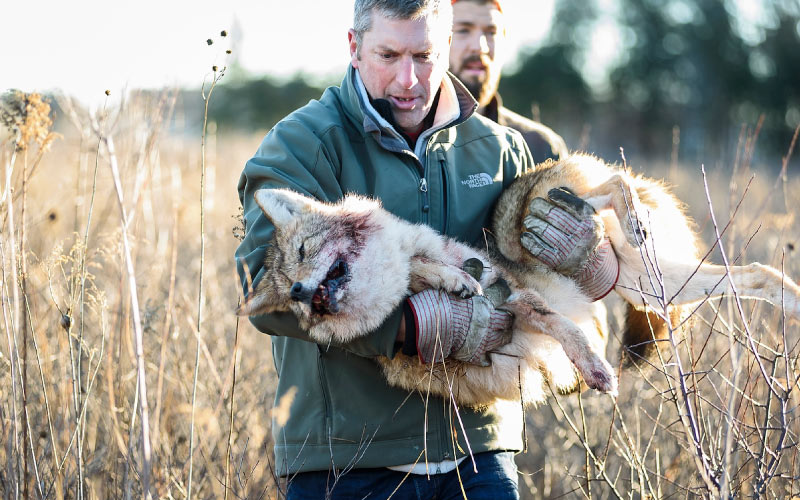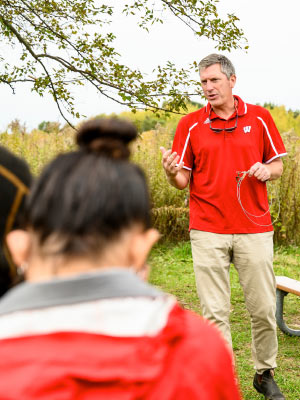
What do buses, Starbucks, and coyotes have in common? If you said, “things you find in a city,” you’d be correct. Surprised? Since 2014, the UW’s Urban Canid Project has been studying coyotes and foxes that live in urban areas, specifically in neighborhoods near the UW campus. Led by Nelson affiliate professor David Drake, the project investigates the habits of these canids and seeks ways to manage a peaceful existence between Madisonians and our new four-legged friends.
The project started after an unlikely observation: Drake and his then-graduate student caught an interaction between a red fox den and a pair of coyotes on a wildlife camera they had placed on the Lakeshore Path. It wasn’t a negative interaction between the two canid species: more of a curious one. As the coyotes sniffed about the fox den, Mrs. Fox stood outside and watched. They acknowledged each other, and that was that. “This isn’t typical,” Drake told the Wisconsin Alumni Association’s Badger Insider magazine in 2018. “In rural areas, if you have coyotes, you won’t find red foxes. The coyotes will displace them — kill them or chase them out. But these coyotes showed no aggression. And these foxes didn’t leave.”

The sighting was curious enough for Drake to launch a full investigation, and the Urban Canid Project took off. Drake has grown the research team since 2014, today including the Nelson Institute’s own Bret Shaw, professor of life sciences communications, and Mary Magnuson, graduate student in the environment and resources program.
Recently, Drake, Shaw, and Magnuson published an article sharing some of their findings, as well as tips for a peaceful coexistence. “We know that peaceful coexistence is possible,” they wrote, “and that these creatures actually bring some benefits to cities.”
The group recently published an article in The Conversation, which also got picked up by the Wisconsin State Journal. Check it out to learn why coyotes are good neighbors, and how we can appreciate them … from a distance.